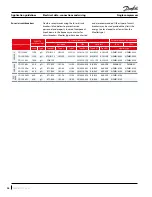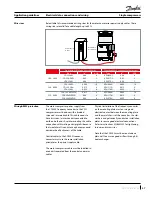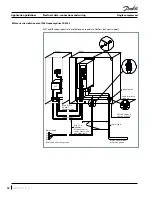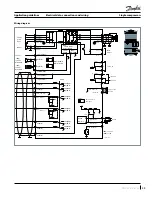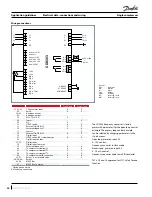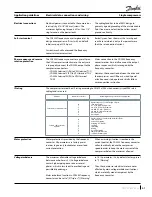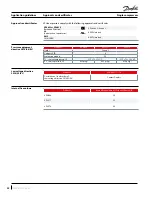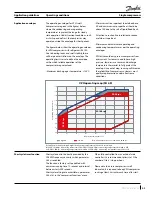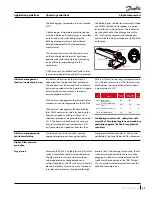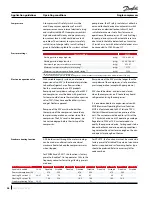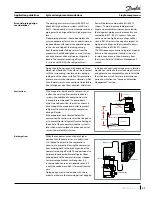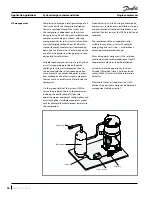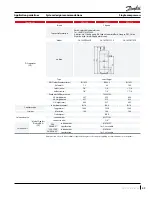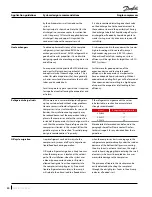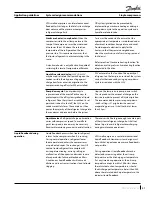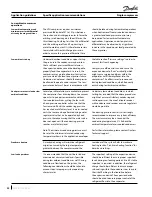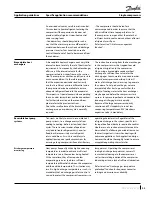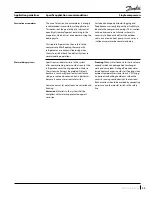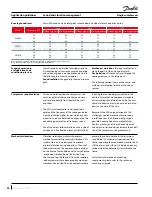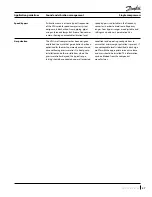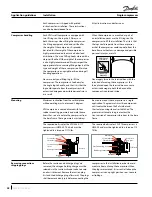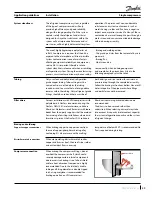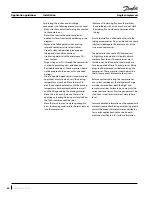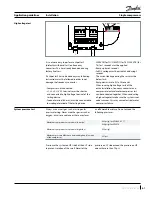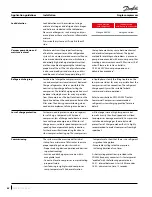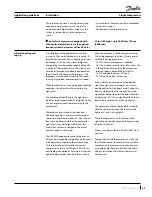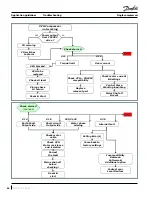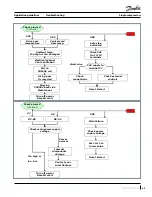
Application guidelines
50
FRCC.PC.023.A7.22
Single compressors
System design recommendations
VZH compressors can tolerate liquid refrigerant
up to a certain extend without major problems.
However, excessive liquid refrigerant in the
compressor is always unfavorable for service life.
Besides, the installation cooling capacity may
be reduced because of the evaporation taking
place in the compressor and/or the suction line
instead of the evaporator. System design must be
such that the amount of liquid refrigerant in the
compressor is limited. In this respect, follow the
guidelines given in the section: “Essential piping
design recommendations” in priority.
If the refrigerant charge exceeds the values
in below table, a suction line accumulator is
strongly recommended.
More detailed information can be found in the
paragraphs hereafter. Please contact Danfoss
technical support for any deviation from these
guidelines.
Refrigerant charge limits
To obtain optimum efficiency of the complete
refrigerant system, optimized R410A heat
exchangers must be used. R410A refrigerant has
good heat transfer properties: it is worthwhile
designing specific heat exchangers to gain in size
and efficiency.
An evaporator with optimized R410A distributor
and circuit will give correct superheat at outlet
and optimal use of the exchange surface. This is
critical for plate evaporators that have generally
a shorter circuit and a lower volume than shell &
tubes and air cooled coils.
For all evaporator types a special care is required
for superheat control leaving the evaporator and
oil return.
A sub-cooler circuit in the condenser that creates
high sub-cooling will increase efficiency at
high condensing pressure. In R410A systems
the positive effect of sub-cooling on system
efficiency will be significantly larger than in R22/
R407C systems.
Furthermore, for good operation of the
expansion device and to maintain good
efficiency in the evaporator it is important to
have an adequate liquid sub-cooling. Without
adequate sub-cooling, flash gas will be formed at
the expansion device resulting in a high degree
of vapor at the evaporator inlet leading to low
efficiency.
Heat exchangers
Model
Refrigerant charge limit (lb)
VZH088
13
VZH117
17
VZH170
30
Off-cycle migration
Liquid refrigerant can find its way into the
compressor by means of off-cycle migration or
liquid floodback during operation.
Off-cycle refrigerant migration is likely to occur
when the compressor is located at the coldest
part of the installation, when the system uses
a bleed-type expansion device, or if liquid is
allowed to migrate from the evaporator into
the compressor sump by gravity. If too much
liquid refrigerant accumulates in the sump it
will saturate the oil and lead to a flooded start:
when the compressor starts running again, the
refrigerant evaporates abruptly under the sudden
decrease of the bottom shell pressure, causing
the oil to foam. In extreme situations, this might
result in liquid slugging (liquid entering the scroll
elements), which must be avoided as it causes
irreversible damage to the compressor.
The presence of liquid in the crankcase can be
easily detected by checking the sump level
through the oil sight glass. Foam in the oil sump
indicates a flooded start.
by the oil separator is well carried over the
system.
Basic principal is shown here. Note that for the
discharge line, same concept as for suction line
with U-trap every 13 ft must be applied between
discharge U-trap and upper U-trap when the
condenser is above the compressor unit.
It is also recommend installing one check valve
on the discharge line to the condenser next to
the condenser to avoid the possibility of having
the discharge tube full of liquid during off cycles;
discharge lines flooded by liquid being able to
create start-up issues by drive over-torque or HP
switch trip.

